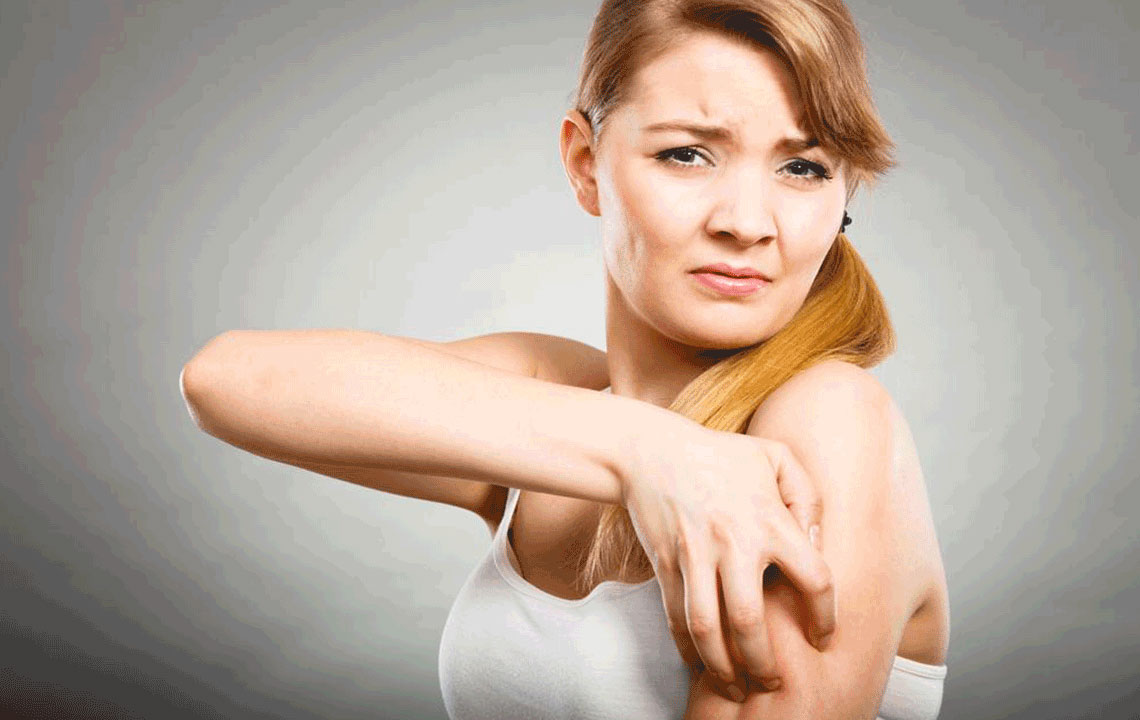Diet Plans for Controlling the Symptoms of Eczema

Eczema is an inflammatory skin condition that causes skin irritation leading to oozing blisters and itchy rashes. This condition leads to leathery skin patches in later stages. This skin condition is common in younger children. There are environmental as well as hereditary triggers that might result in developing this skin condition. In some cases, eczema might be related to food allergies. Food products such as cow’s milk, eggs, soy products, gluten, nuts, fish, and shellfish have known to trigger or flare-up the symptoms of eczema. Thus, proper medications and eczema-friendly diet options can be a good alternative for eczema treatment.
Let’s have a look at some of the eczema treatments in the form of dietary options that can provide relief from the symptoms of eczema.
- Fatty fish
There are some cases where patients were able to get relief from the symptoms of eczema by eating fatty fish such as salmon, mackerel, herring, lake trout, sardines, albacore tuna, etc., that are rich in omega-3 fatty acids. Fatty acids help in reducing inflammation. People suffering from eczema can also consider consuming omega-3 fatty acids in the form of supplements. However, it is important to consult a health specialist before taking these supplements. - Foods rich in quercetin
Quercetin is a type of a flavonoid. It is a type of polyphenol that is found in a number of fruits and vegetables. It is a natural antioxidant and antihistamine as it reduces histamine levels as well as inflammation in the body. Foods that are rich in quercetin include apples, blueberries, cherries, broccoli, spinach, and kale. - Probiotic foods
Probiotic foods help in developing a strong immune system. This further helps in reducing flare-ups and allergic reactions occurring due to eczema. Foods rich in probiotics can be considered as a good option for eczema treatment. Some of the probiotic foods include sourdough bread, miso soup, naturally fermented pickles, soft cheeses, unpasteurized sauerkraut, kefir, and tempeh. - Anti-inflammatory diet
As the name suggests, this is a type of eczema treatment that focuses on reducing the inflammation of the body by eliminating those foods that cause inflammation and replacing them with fiber-rich foods such as fruits, vegetables, whole grains, and healthy fats that include olive oil. - Mediterranean diet
This diet emphasizes on including quercetin in the daily diet. Sugary desserts and red meat should be completely avoided in this diet as they might trigger the symptoms of eczema. - Dyshidrotic diet
Dyshidrotic and elimination diet are two separate diets. While Dyshidrotic diet is for people who suffer from dyshidrotic eczema, the elimination diet is for those people who are not aware of their eczema triggers. Dyshidrotic eczema can be characterized by blisters appearing on hand and feet. Chemical components such as nickel and cobalt aggravate the symptoms of dyshidrotic eczema. Foods rich in nickel and cobalt include whole wheat, whole grain, oats, cocoa, baking powder, soy products, dried fruits, chickpeas, and canned foods. Thus, to reduce absorption of these elements, eat vitamin C rich fruits and vegetables such as bell peppers, kale, oranges, cauliflower, and mango. - Elimination diet
The elimination diet is recommended for those people who are specifically diagnosed with food allergies. Eczema treatment through the elimination diet requires the person to remove specific food and food groups for at least 3 to 4 days and observe if the symptoms or flare-ups subside. Try removing a whole food group at a time. It is observed in some people that celiac disease and eczema go hand in hand. Celiac disease is an autoimmune disease that can be controlled by eliminating gluten from the diet, hence if a person suffering from celiac disease and eczema excludes gluten-rich food from the diet, it could help subside the symptoms of eczema.
People suffering from this type of skin condition should keep a track on the type of diet and food products that they consume. Although they might not be directly associated with the skin condition, they might trigger and flare up the symptoms caused due to eczema.
- As discussed above, some of the food products such as dairy products, eggs, soy, nuts, etc., some of the common triggers that might flare up the symptoms of eczema.
- There are other products that are present in the processed food that may also exacerbate the symptoms of eczema. Preservatives, artificial ingredients, and trans fat-rich foods such as margarine can aggravate the symptoms caused due to eczema.
- Highly processed sugar might increase the level of insulin in your body which might also lead to inflammation. Food products that might increase insulin levels in your body include cakes, coffee drinks, sodas, smoothies, and junk food.
Unfortunately, there is no specific diet that can be considered as a complete eczema treatment. However, there are some specific diet plans that can work on the symptoms of the same such as itchiness, dry skin, inflammation, etc.


